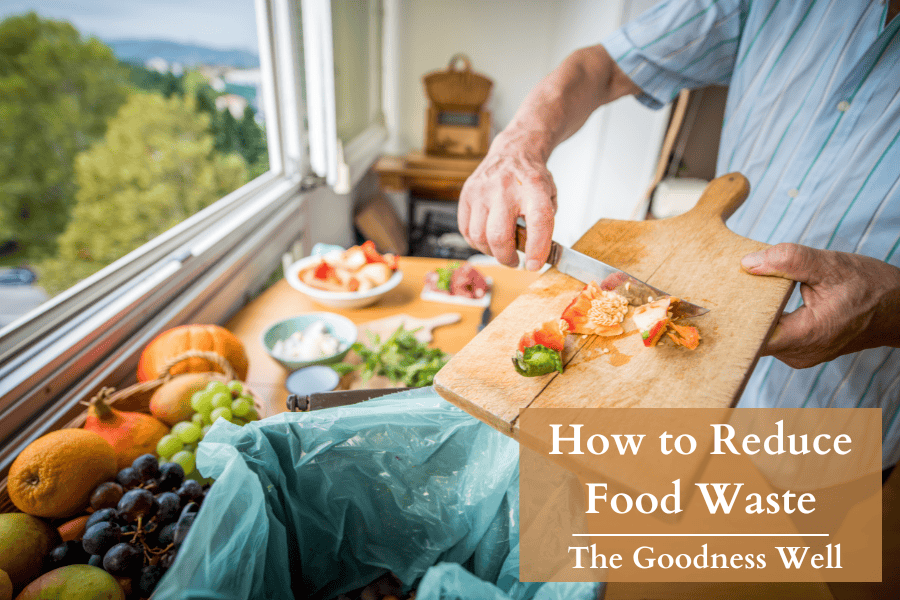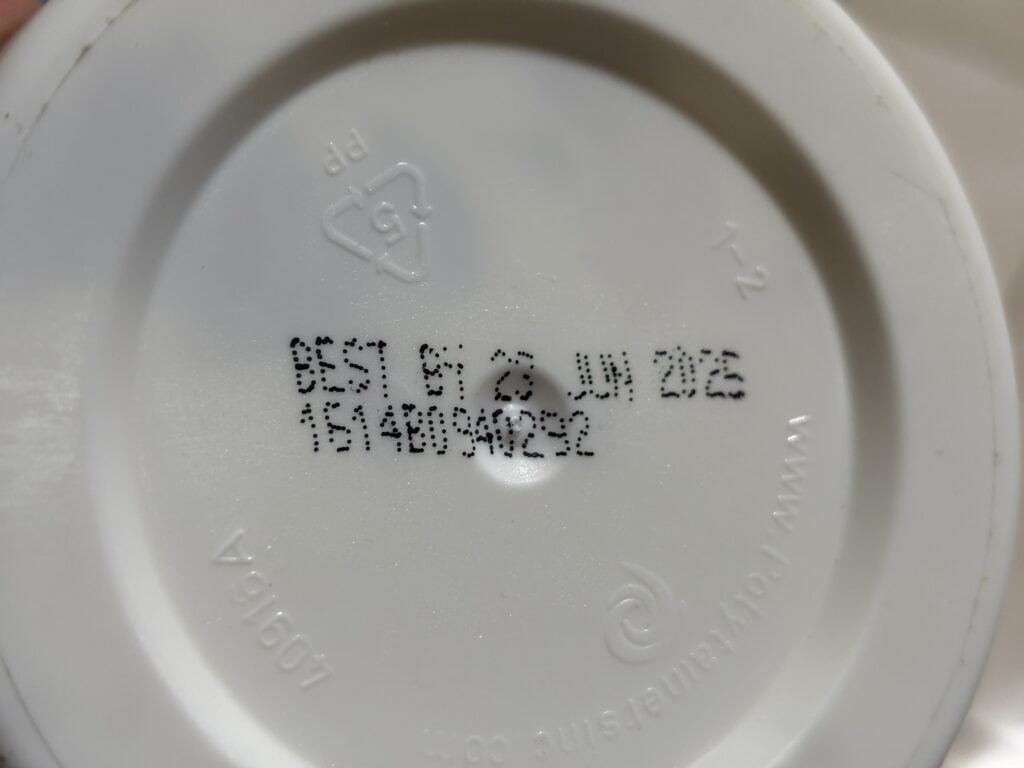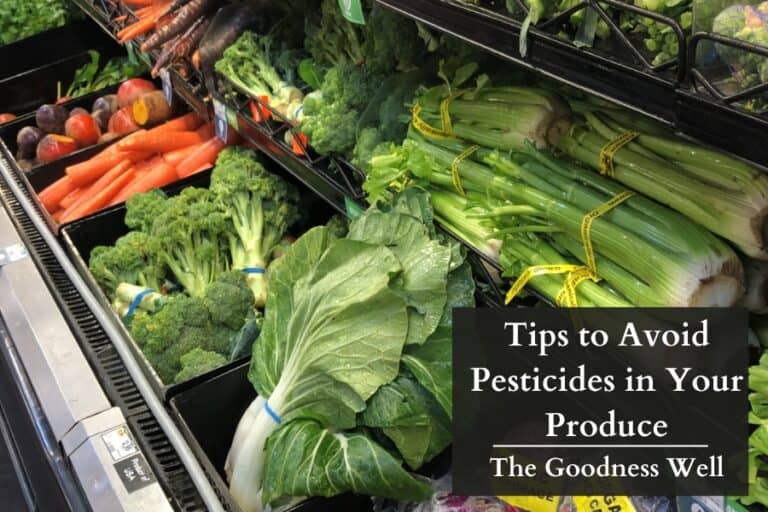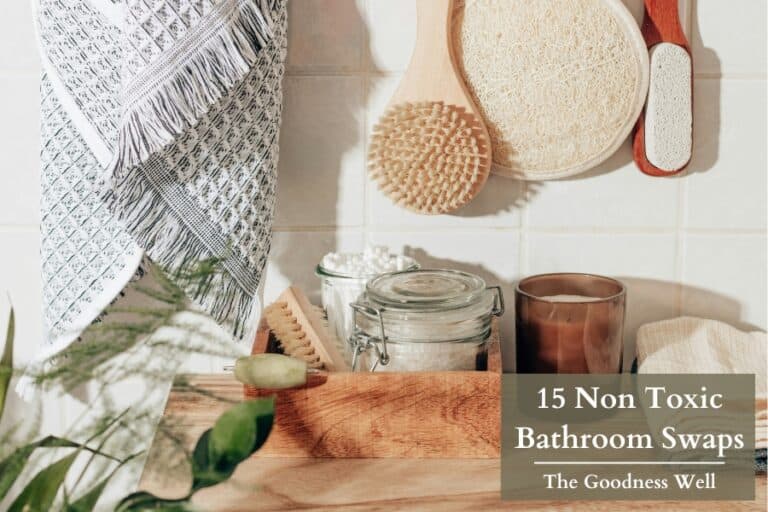The 7 Essential Hacks to Reduce Food Waste at Home

Looking for ways to reduce your food waste?
I don’t blame you.
Household food waste accounts for 40- 50% of all food wasted in the U.S., mostly due to simple misunderstandings about food storage and expiration dates.
The good news is that with these simple strategies, you can dramatically reduce your food waste, save money, and help the environment.
Here we go!
1. Understand Food Date Labels (They’re Not What You Think!)

Those date labels on your food packages are probably causing you to throw away perfectly good food.
Don’t feel bad, we used to do the same thing.
However, these labels rarely indicate food safety and are primarily about quality.
What Those Dates Really Mean
- “Best if Used By/Before” only indicates when the food will taste best
- “Sell-By” tells stores on how long to display products
- “Use-By” refers to peak quality, not safety
How to Tell if Food is Actually Bad
Trust your senses instead of the date:
✔️ Does it smell off?
✔️ Does it look unusual?
✔️ Does it taste strange?
✔️ Has the texture changed?
If food is off based on these signs, don’t eat it.
If it looks and smells normal, it’s usually fine to eat even after the date has passed.
2. Preserve Surplus Food

Don’t let extra food go to waste! Try these preservation methods:
- Freeze extra produce and leftovers
- Pickle vegetables
- Dehydrate fruits and herbs
- Can seasonal produce
- Make jam or jelly from surplus fruits
Keep a freezer bag for vegetable trimmings (onion ends, carrot peels, celery leaves). When full, simmer for hours to make delicious vegetable stock!
3. Shop Smart, Waste Less

- Plan weekly meals before shopping and buy only what’s needed
- Be realistic about how many meals you’ll actually cook versus eating out
- List specific quantities on your shopping list (e.g., “chicken for 2 dinners and 2 lunches”)
- Keep a running inventory of what’s in your pantry, refrigerator, and freezer and check it before buying food
✨ We keep a list of our most common foods we buy on the fridge and refer to that before we buy food
📌 Print this infographic, print, and hang on your fridge!
4. Master Food Storage Locations
Not every part of your fridge is the same.
Every zone in your refrigerator and pantry has an ideal temperature, making it perfect for certain foods but potentially harmful for others.
Storing items in their proper locations is vital for making food last!
Here are the guidelines to follow:
Refrigerator Door (Warmest Part of Fridge) 🚪
- Best for: Condiments, juices, preserved foods
- Avoid storing: Milk, eggs, cheese, yogurt, and other perishables
Top Shelf 🔝
- Best for: Ready-to-eat foods, leftovers, prepared salads, packaged foods
Lower Shelves (Coldest Part) ❄️
- Best for: Raw meat, poultry, and fish (store in containers to prevent dripping)
Dry Storage 🥫
- Store grains and dry goods in airtight containers
- Label with contents and purchase dates
- Freeze bread, flours, and nuts that won’t be used quickly
5. Store Fruits & Vegetables Properly 🥬🍎
Fruits and veggies require specific humidity and temperature conditions to stay fresh as long as possible.
Those drawers in your refrigerator with the little sliders aren’t just random storage—they’re designed with adjustable humidity levels to keep your produce fresh for as long as possible.
Here’s how to use them correctly and where other produce should be stored.
Low Humidity Drawer (Open Vent) 💨
- Apples (keep away from bruised ones. Also, apples spoil much faster at room temperature)
- Grapes, pears, blueberries
- Stone fruits (when ripe)
- Ripe avocados
- Melons, peppers, citrus fruits
- Mushrooms
High Humidity Drawer (Closed Vent) 💧
- Leafy greens (lettuce, spinach, kale)
- Fresh herbs, broccoli, cauliflower
- Brussels sprouts, carrots, cucumbers
- Green beans, asparagus, celery
- Strawberries
Pantry/Cellar 🏠
- Potatoes, sweet potatoes, winter squash
- Onions (keep away from potatoes!)
- Garlic, hard unripe pears
- Canned goods, dry beans, lentils
- Rice, grains, and root vegetables
Room Temperature 🌡️
- Tomatoes, bananas, unripe avocados
- Citrus (short term), pineapple
- Mangoes (until ripe)
- Basil (in water, like a bouquet)
- Bread (short term)
- Stone fruits (until ripe)
- Watermelon (uncut)
Don’t store bananas next to other fruits and once ripe move them to the fridge.
6. Additional Storage Hacks 🔍

Beyond basic refrigerator organization, here’s some more hacks that can even further extend the life of your produce.
Hack #1: Preserve Cut Fruits 🥑
Rub lemon or lime juice directly on cut surfaces, then wrap tightly or place in a sealed bag:
- Apples, pears, bananas
- Peaches, nectarines, apricots
- Avocados, mangoes, plums
Hack #2: Accelerate Ripening 📦
Place these fruits in a closed paper bag to help them ripen even faster.
- Avocados (works extremely well)
- Bananas, pears, mangoes, kiwis
- Peaches, nectarines, plums, apricots
- Tomatoes, persimmons, papayas
Hack #3: Water Jar Storage 🌱
Store these upright in a glass of water to keep fresh as long as possible:
- Fresh Herbs: Green onions, parsley, cilantro, mint, dill, chives, basil (room temperature)
- Vegetables: Asparagus, carrots with greens, bok choy, fresh fennel
Quick Tips:
- ✂️ Trim ends before placing in water
- 💧 Change water every 2-3 days
- 🌿 For herbs, loosely cover with plastic bag
- 💦 Only submerge cut ends
Hack #4: Airtight Container Storage 🔒
When you chop fruits and vegetables ahead of time, they immediately begin to lose moisture and freshness.
Airtight containers will slow this process!
- Vegetables: Bell peppers, carrots, celery, cucumbers, zucchini, broccoli, cauliflower, cabbage, lettuce, mushrooms
- Fruits: Melons, pineapple, mango, berries, citrus fruits
- Chopped Herbs: Parsley, cilantro, dill, chives
Tips for Success:
- 🧼 Use clean, dry containers
- 🫙 Choose appropriate container size
- 🧻 Add paper towel to absorb excess moisture
- 🍎 Store ethylene-producing fruits separately
7. Compost What You Can’t Use 🌱

This one has been a game changer for our garden (even if you don’t garden this is still a great practice for the environment). Composting returns nutrients to the soil rather than contributing to landfill methane emissions.
We just throw all the food scraps we collect into a bin, toss it in a pile outside, and months later we have some of the most nutrient rich dirt you can find!
8. The Fridge List: A Simple Memory Helper 🗒️

Keep a master list of your household’s most commonly purchased foods on your refrigerator door.
This easy trick has big benefits:
What To Do:
- ✏️ Write down foods your family eats regularly
- 📌 Post it where everyone can see it
- 👀 Glance at it before shopping
- ✔️ Mark items you need or have plenty of
Why It Works:
- Eliminates duplicate purchases – no more buying something you already have
- Prevents forgotten food – provides a visual reminder of what’s in your refrigerator
- Streamlines meal planning – easily see what ingredients are available
- Reduces shopping time – your grocery list is already half-done
- Encourages family participation – everyone can mark items that need replacing
Keep it Simple: No complicated system needed—just a simple list that helps you keep track of what you have and what you need.






